Top Interior Heritage to Discover
The Knin Fortress is one of the greatest Croatian fortification monuments and the second largest military fortification in whole Europe, extremely indented and preserved in all its parts. The construction of the fortress started in the 9th century, in the period of the Early Croatian Republic, and some Croatian kings held their capital intermittently in Knin, whereas King Dmitar Zvonimir even held the permanent one. The fortress consists of five connected parts located 345 m above sea level and about 100 m above the town of Knin. It is 470 m long and on its highest part 110 m wide. The defensive walls, about 2 km long and enclosing the fortress from all sides, are even up to 20 m high at several places. The fortress is a living monument of culture and includes a museum, exhibition galleries and a restaurant.

The Gradina Fortress
The Gradina Fortress is a historical monument and a part of the system of fortresses of the noble family Nelipčić, located in Drniš 344 m above sea level, above the canyon of the Čikola River. Built on the site of strategic importance, it offers a breath-taking view of the city and Promina Mountain. With the arrival of the Venetians in the late 17th century its demolition was ordered, however it was soon restored because of the threat of the Turkish breaking in, which was present until 1715. In the 19th century the fortress lost all functions and became a source of building materials for the growing city of Drniš. Today's remains that are visible on the southern side are the original part of the medieval fortress, while the central tower and the north-eastern defence wall are added in the period of Ottoman rule.
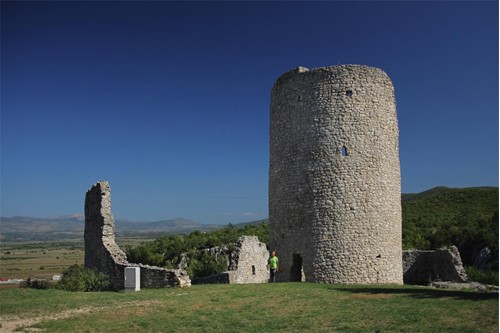
Church of the Most Holy Redeemer
The Church of the Most Holy Redeemer, built from 1926 to 1930, is the last resting place of the great Croatian sculptor Ivan Meštrović, as well as the closest members of his family. The architectural project of Ivan Meštrović was realized by architects Harold Bilinić and Lavoslav Horvat and builder Marin Marasović, and with the construction of this building, Meštrović fulfilled the intention to build a tomb to his family and to give his native land a church in which the holy mass shall be held in the language of the people.
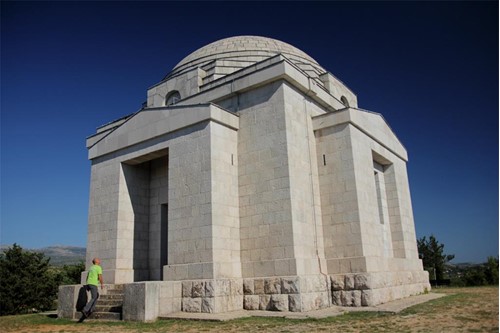
Burnum
The remains of Burnum, an ancient Roman military camp, colloquially referred to as "Šuplja crkva" (Hollow Church), are located in the settlement of Ivoševci, about 19 km from the town of Knin. Following the road from Knin to Zadar there are two arches on the left side, as the canyon of the Krka River starts to spread out in the background. These arches are probably constituent parts of the main entrance (porticus principia) to the camp. The principia was the command building and administrative and religious centre of the Roman military camp, and it was located on the crossroads of the two most important streets in the camp, via principalis and via praetoria. The other locality represents the amphitheatre dating from the 1st century, i.e. from the period of Emperor Vespasian.
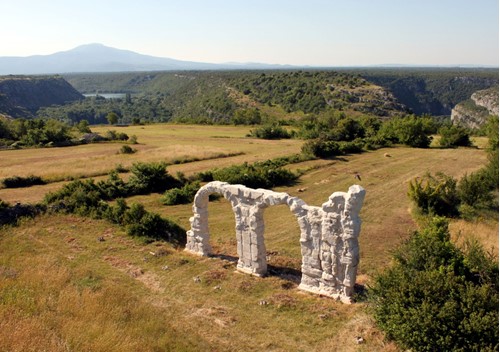
Bribirska Glavica
In the settlement of Bribir, 15 km from the town of Skradin, there is an attractive site named "Bribirska glavica", the centre of the Croatian State in the 13th century and a cultural monument of the highest category. The archaeological site "Bribirska glavica" (the Antique Varvaria and the Early Croatian Bribir) encloses the surface of about 72,000 m2 and it is situated 300 m above sea level. It is one of the most important archaeological sites in Croatia (known as "The Croatian Troy" among the archaeologists), where it is possible to follow the sequence of living from prehistory, Liburnian age, Early to Late Antiquity and Early Croatian to Early and Late Middle ages. St. Nicola Tavelić, the first Croatian saint, in 1375 joined the Franciscan order in St. Mary's Monastery at "Bribirska glavica".
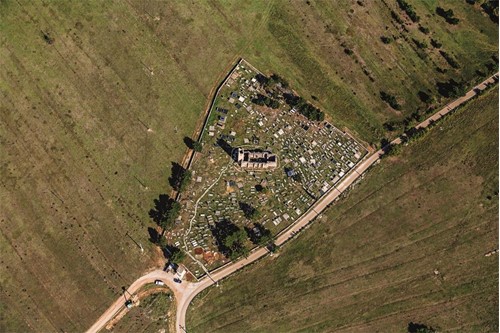
Danilo
Danilo is a well-known archaeological site, where numerous remains from the Neolithic, Illyrian and Roman times were discovered, as well as the finds from more recent times. The history of Danilo started already in the Neolithic period, more than seven thousand years ago. The Danilo Culture is characterized by well-shaped and baked vessels, characteristically shaped pots, pans and plates. The vessel that in the most obvious way presents the culture is the rhyton, a decorated vessel with four legs and a big carrying handle. This special trademark of the Danilo Culture had a very important place inside the cult of the Neolithic man, especially during various rituals. The phallus that characterises one phase of the Neolithic times is also connected with the vessel and both objects may represent the fertility cult in the ritual.
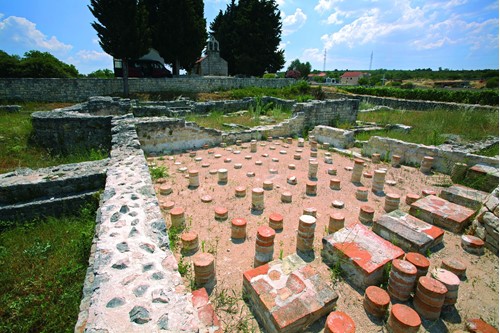
Arauzona
According to the finds and its position, some identify Velika Mrdakovica with Arauzona, a Liburnian settlement described by Plinius in his travelogues. This important Liburnian / Roman settlement with a necropolis was situated on one of the Roman roads connecting Iadera (Zadar) with Salona (Solin). The oldest layers date back to the 4th century BC and the more recent to the 3rd century BC, i.e. the era of the Roman rule, which testifies to the fact that this locality was continuously inhabited. The settlement was divided by streets and bounded with walls made of crushed stone. The most valuable characteristic of the locality is a large number of various painted-glass kitchenware, considered as the most valuable finds of its kind on the entire territory of the Roman Empire. The finds are today kept in Šibenik Town Museum.
Visovac Monastery
Visovac Island stands in the middle of a Visovačko lake located within the boundaries of Krka National Park, where the green waters of the Krka River have created a karst plateau, giving rise to the harmonious coupling of natural and historical heritage. Visovac was first mentioned in the 14th century documents, whereas at about 1445 the Franciscans inhabited the island, expanded its area and took up science and education, erecting the church and in 1576 the monastery. The monastery boasts its own museum, archive, library, paintings, liturgical vessels, clerical clothing and votive offerings. The island, transformed by the monks over centuries of diligent work into a charming dwelling full of trees, colourful flowers, fruits and vegetables, is an irresistible on-going attraction for numerous pilgrims and tourists alike.
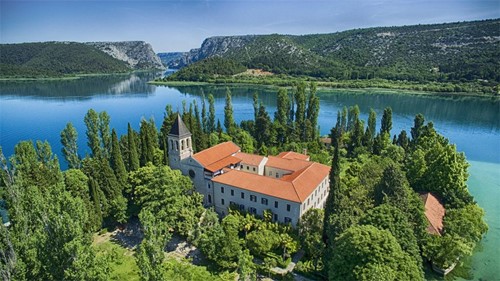
The Church of St. Roch
The Church of St. Roch, the patron saint of Drniš, was built in 1731 and completely restored in 2014. At the time of its construction the plague had decimated the local population, so people under the patronage of the two prominent ladies, Franjica Theodosio and Angela Gili, built the church and dedicated it to St. Roch, the protector invoked against the plague. Besides the altar of St. Roch, in 1738 an altar dedicated to the Mother of Seven Sorrows was added, as well as another one in 1741. Every year on August 16 the whole town celebrates both the Feast of St. Roch and the Day of Drniš, and numerous visitors partake in the mass and the traditional procession through the town, as well as in the final evening festivities.
The Drniš Town Museum is located at the entrance to the town, near the bridge over Čikola River. The museum houses an impressive collection of 50 works of art by sculptor Ivan Meštrović, as well as an archaeological collection, a cultural history collection, a collection of old photographs and postcards, maps and graphics, weapons and military gear, a numismatic collection, a collection of medals and decorations, and a contemporary art collection. The gallery space of the museum hosts travelling exhibitions and exhibitions of items from the rich museum holdings that are not usually on display, as well as book launches, concerts, and other cultural events. The museum also manages the Old Mill (or “Stara mlinica”) on the right bank of the Čikola River, about 150 m downstream from the bridge at the mouth of the canyon, near the entrance to Drniš. According to historical sources, the mill dates back to the Middle Ages, and it initially probably belonged to Croatian noble families. Due to its age, building quality, position and environmental value, the mill has been designated as a cultural heritage site.

